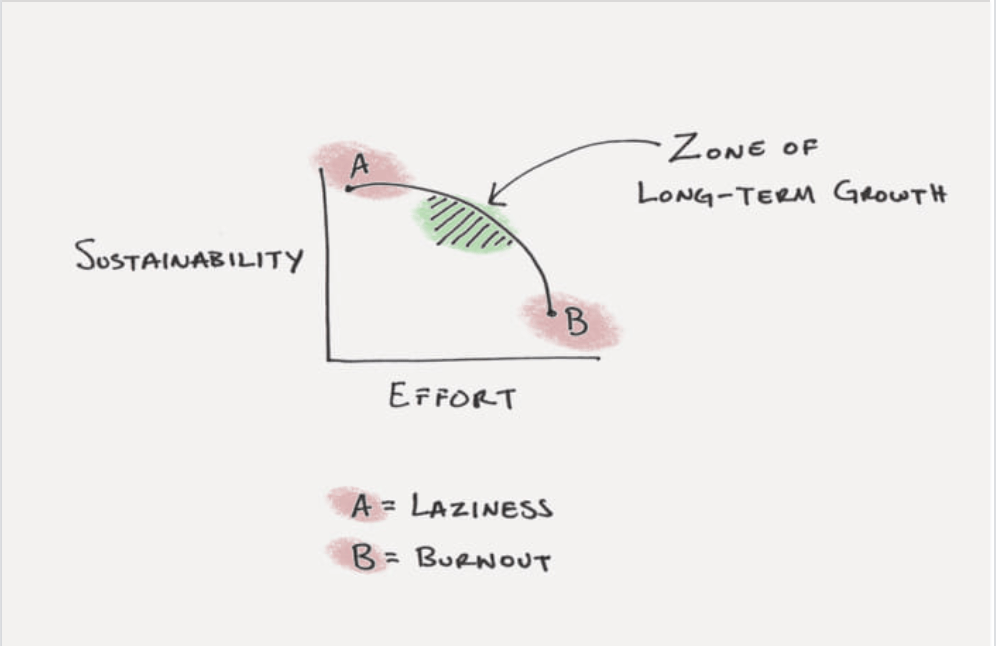“Motivation is a lie, and habits take more than 30 days to create.”
This statement holds true in any context, but this blog discusses how it is relevant to weight loss. The majority of people who join a studio intend to lose weight, and the most important formula anyone attempting to lose weight needs to understand is:
WEIGHT LOSS = CALORIES CONSUMED ⬇️ and CALORIES BURNED ⬆️
If you ignore any part of this equation, you will not lose weight. If your goal is not just to lose weight, but also to keep it off (a.k.a. Long-term growth), you must learn to apply effort towards your goal in a sustainable way, as pictured in the graph below:

Long-term, sustainable growth occurs when you understand the concepts of motivation, structure, and habits, and apply them correctly.
What is Motivation?
Motivation is an emotion. It can disappear or reappear as quickly as sadness, anger, or happiness. It is the most unreliable catalyst for success because it doesn’t last. Typically, people are motivated to make a change, but can’t maintain the motivation for a sufficient amount of time to form the necessary habits to create lasting change. The issue is not a lack of motivation, but rather an incorrect focus. Instead of focusing on motivation as the catalyst for change, you need to focus on creating structure.
What Does Structure Look Like?
When you create structure you become strategic about your goals. You create an ideal plan and a back-up plan (or two) to ensure that you cannot fail. Below are examples of different structures for someone whose goal is to lose weight.
⬆️ CALORIES BURNED:
Plan A: Attend 2 group sessions and 1-2 Accelerator classes every week.
Plan B: Substitute a run outside for a day when you can’t make it to the studio.
Plan C: Create a workout space at home so you can exercise on busy days with lousy weather.
⬇️ CALORIES CONSUMED:
Option 1: Plan your meals for the following day, before you go to bed. Log them in My Fitness Pal, and you treat your food as a “to-do” list.
Option 2: Prep all of your food for the week in one day. Keep 2-3 days’ worth in the fridge and freeze the rest.
Option 3: Write yourself a set menu with 3 choices for each meal. Make sure you have ingredients for each one on hand, and always include an “emergency / no time” option. Log the meals in My Fitness Pal for future reference and select one for each meal.
The trick to creating a structure that works is writing your plans down and then doing them every single day, regardless of whether or not you feel motivated. This is how you create a habit.
What is a Habit?
A habit is a behaviour you perform without thinking about it. Some examples of habits are brushing your teeth from left to right, starting the car engine before you put on your seatbelt, and drinking a glass of water before you go to bed. You most likely have hundreds of habits that you don’t even realise. The problem is, habits can be both positive and negative. At some point, they all start as a conscious choice. If you want to change your habits, your first step is to become aware of what you are doing.
The Final Word
If you want to create lasting change you cannot rely on motivation; rather, you must learn to create structure in your life. When you consistently apply that structure, regardless of how you feel, you will start to form habits that will help you achieve your goal.
